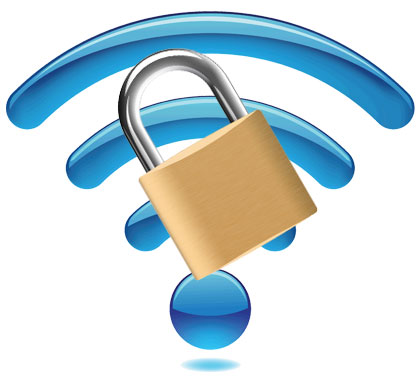Do you know how much Wi-Fi connection is needed at home these days? Did you know that the demand for routers has been increasing in recent times? The evolving technological universe means that most houses are recently filled with a variety of devices and gadgets for which the need for internet connection is increasing day by day. This has opened the door to various risks and created a variety of security issues on the internet to connect our phones, PCs, tablets, refrigerators, TVs, or all other devices.
Most people are not aware of the risks of this device, which can create problems if not protected through a reliable Wi-Fi network. At the same time, we never dreamed of keeping our front door open, just as leaving the Wi-Fi networks unsafe puts us at a similar security risk.
You have to deal with two major security issues. Firstly, you need to control who can come to your house network. The signal footprint is the second one. If people from outside of your home can pick up a signal from your router, they can capture data and even take all your passwords.

To secure a house network is very important when it comes to protecting our data from hackers and protecting information. So, let’s talk about the protection process of your home Wi-Fi.
-
Choose a unique name for home Wi-Fi
Change in the SSID (Abbreviation: Service Set Identifier) is the first step in securing the Wi-Fi in the house. Many builders set up most of their wireless routers with a default SSID network. As can be seen, in various cases, it’s named after the organization. But when a personal computer attached with wireless connectivity can check and display nearby wireless networks, it also creates a list for a particular network that broadcasts its SSID publicly. This gives hackers a complete chance of gaining access to your network system. So, it is better to change all SSID of the network to something that will expel hackers from their mission without disclosing any personal information.
-
Select a Unique Password
Most wireless connections come with a common password. It’s best to change the Wi-Fi password frequently. It is possible for hackers to guess the common password, especially if they know the router builder. So, if you want to select a perfect password for your network, try to make sure that the ideal password should have twenty characters and contains numbers, letters, and different symbols. This will create a slight difficulty for hackers to break your network. Regularly changing your password will allow you to reconnect all your devices and kick out any unwanted viewers who are hiding.

-
Keep the Firmware Updated
Sometimes, you need to check the manufacturer’s site to make sure your router is running the new firmware. You will get the existing firmware version using the router’s dashboard.
Your router runs the firmware that controls everything on the router. It is designed to protect the computer from harmful intrusions. It sets security standards for your network, sets rules about which devices can connect. Some modern routers update their background, but it is always worth making sure the firmware is up to date. This means you get the most bug fixes and protection patches and are protected against detectors.
-
Use Hard Encryption
It would help if you encrypted your wireless signals to block other computers in the area from using your Internet connection. Almost all types of wireless routers enter with an encryption characteristic. But, it stays off by default. Turning on the encryption settings of your wireless router can also help to protect your network. Also, try to make sure when you switch it on as soon as you install your broadband contributor router. The most recent and effective of all several types of encryption available is “WPA2”.
You may also like –
https://toptechytips.com/wifi-hacking-android-apk/
-
Keep the router’s software updated
Router firmware, like other software, often has flaws that can become a major weakness if a firmware release from the builder does not quickly resolve them. So, always try to install the recent available software version and download the most recent security patches to avoid any security breaches to online predators.
-
Use a VPN
A virtual private network called VPN will help you keep your personal staff safe online while keeping them secret. They encrypt your data and hide it from one end to the other. People can use a VPN called Norton Secure VPN as a way to secure their connection. In theory, hackers could gain access to your network and would not be able to do any harm to your system by assuming that the VPN is still running permanently.
-
Turn off the network when no one is home
If you do not use your Wi-Fi or you are on vacation and do not need a home Wi-Fi network for a few weeks, you can turn off the router. Hackers can’t work through your network when it’s not turned on. Sometimes, you’ll want to leave a large download overnight. But most of the time, try not to use the network while you’re asleep. It is better to turn off all these things at night and unplug them. It is a protection against sparks that ignite equipment and is a good practice in preserving the environment. Make sure the router you buy for home use must be placed in a center room.
-
Enable MAC address filtering
You can restrict access to your wireless connection network only by allowing certain devices to connect and excluding the rest. However, each wireless product has a MAC address that will also have a unique number, and MAC authentication only agrees to allow their network from a set of addresses which is specified by the administrator.
This obstructs unauthorized devices from accessing network sources and acts as an additional barrier for hackers who try to access your network.
Conclusion
As you can see, none of the solutions on the list cost money or are not complex to understand. So, try to protect your data and information from identity thieves. The majority share of these suggestions is common-sense steps that anyone can take. So, you should follow this method to protect your home Wi-Fi from hackers who can help you.







































Leave a Reply